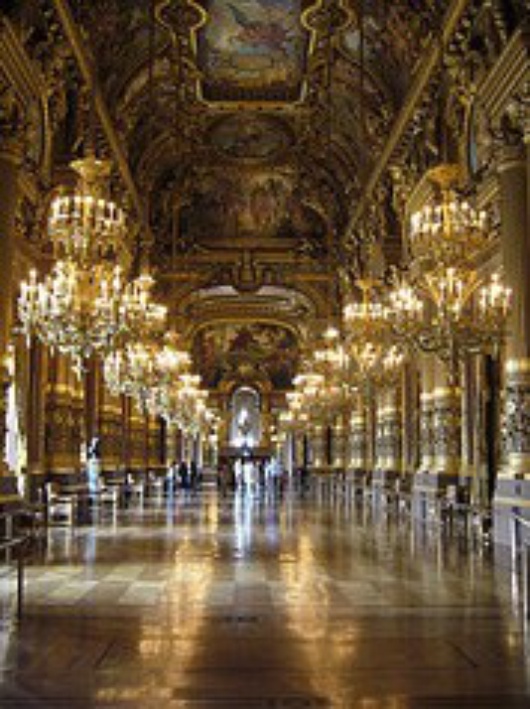Each one his own parallel society
Published on
Not only migrants seek to separate themselves from the rest of society, but this society itself is divided into numerous subcultures, each one living in its own world. Divided between discounter and delicates shop, the fight for existence and existentialism, the idea of a society united by one culture is only a construction.
 There is presently a ghost passing through Europe: The ghost of parallel society. It is nourished by the fear that single groups might seek to separate themselves from the rest of society. By the fear that a separate culture with a distinct culture and language might form. By the fear that in districts like Kreuzberg, Barbès or Anderlecht the peaceful coexistence might change into hostility. But even though an ethnic and cultural segregation is no longer to be denied in many European cities and the problems this has for consequence become ever more obvious the question remains: Is not also the so called majority society in reality divided into dozens of different groups, each one living in its own distinct world?
There is presently a ghost passing through Europe: The ghost of parallel society. It is nourished by the fear that single groups might seek to separate themselves from the rest of society. By the fear that a separate culture with a distinct culture and language might form. By the fear that in districts like Kreuzberg, Barbès or Anderlecht the peaceful coexistence might change into hostility. But even though an ethnic and cultural segregation is no longer to be denied in many European cities and the problems this has for consequence become ever more obvious the question remains: Is not also the so called majority society in reality divided into dozens of different groups, each one living in its own distinct world?
No one has only one, but several sometimes contradictory identities. No one is only British (or Indian) and Christian (or Muslim) but also manager (or mechanic) and academic (or illiterate). What’s more, every one has a professional, a geographic and a political identity. By consequence each person belongs to different groups that - depending on the individual disposition – are of greater or lesser importance. This means that the idea of clearly defined religious or ethnic groups is only a construction. And what’s more, that the so called majority society is all but homogenous.
Not much in common
 What does the successful consultant living in the fashionable city-centre have in common with the unemployed watchman from the rundown suburb? What is the link between the respected head physician living in a prosperous garden-estate and the single parent living on welfare in a neglected downtown district? They belong to the same society but live in different worlds. Studies show that in industrialized countries the gap between classes not only widens but becomes ever more permanent. In spite of public aid social mobility is ever more restricted because the education system helps rather stabilize than overcome inequality.
What does the successful consultant living in the fashionable city-centre have in common with the unemployed watchman from the rundown suburb? What is the link between the respected head physician living in a prosperous garden-estate and the single parent living on welfare in a neglected downtown district? They belong to the same society but live in different worlds. Studies show that in industrialized countries the gap between classes not only widens but becomes ever more permanent. In spite of public aid social mobility is ever more restricted because the education system helps rather stabilize than overcome inequality.
Not only living conditions but also the outlook on the world differs from one class to the other. Whereas the consultant is likely to originate from a family with a long academic tradition that permitted him to pass his childhood in ease and to suck up education with his mothers milk leaving him the freedom to pursue his personal and professional development, the watchman is probably from a proletarian family where day to day life was dominated by financial insecurity, a university education was quite out of the question and the personal horizon ended at the limit of the neighbourhood. Who is surprised if the one looks full of confidence on life, whereas the other’s perception of the world is marked by insecurity?
Careful to keep ones distance
These socio-economic differences are perpetuated in the cultural domain. Whereas the head physician spends her evenings reading the Guardian while listening to Bach, watching a Bergman film while drinking a glass of sherry or planning her next holiday trip to Marrakesh with her husband, the welfare recipient is sitting in front of her television watching a game-show or hanging around in the social-centre drinking a filter-coffee. A visit to the Mozart opera, the comedy by Molière or the exposition by Cezanne is not only unaffordable but also quite inconceivable to her. Just as inconceivable as it is to the head physician to go bowling in the local sports-centre or play poker in the pub next door.
Each class is careful to separate itself from its inferiors. Aesthetic distinctions signal a persons place in society. The banker in shirt and corduroy-trousers and the mechanic in training-suit and soccer-tricot live worlds apart – and that not only in terms of taste. Even if the social ascent is successful – the almost imperceptible distinctions in behaviour and style can not be acquired but only inherited. Even when the social upstart is no longer identifiable by his clothing he will still be identified by language and taste and therefore excluded.
The stranger in the house
And then there is the gap of generations. For many parents the foreigner is to be found in his own house. The search of the young for distinction from the generation of their parents has lead to the formation of numerous subcultures that to the outsider are not only impenetrable but also incomprehensible. The punk in his metal studded leather-jacket, the skin in his white laced army boots or the hip-hopper in his baggy trousers have not only in music and fashion their own rules and rituals. With a network of clubs, bars and centres they form a clearly distinct parallel world.
Considering the social, economic and cultural fragmentation of the population the idea of a homogenous society, united by a common culture and language, appears as an illusion. In spite of his different religion and origin the British factory-worker has more in common with his Indian colleague than with the company-manager, the university-professor or the department-director of his own nationality. So why has nobody yet thought of creating a project to integrate the detached elite or the disconnected proletariat? The question would only be into which of the other parallel societies one should integrate them.



